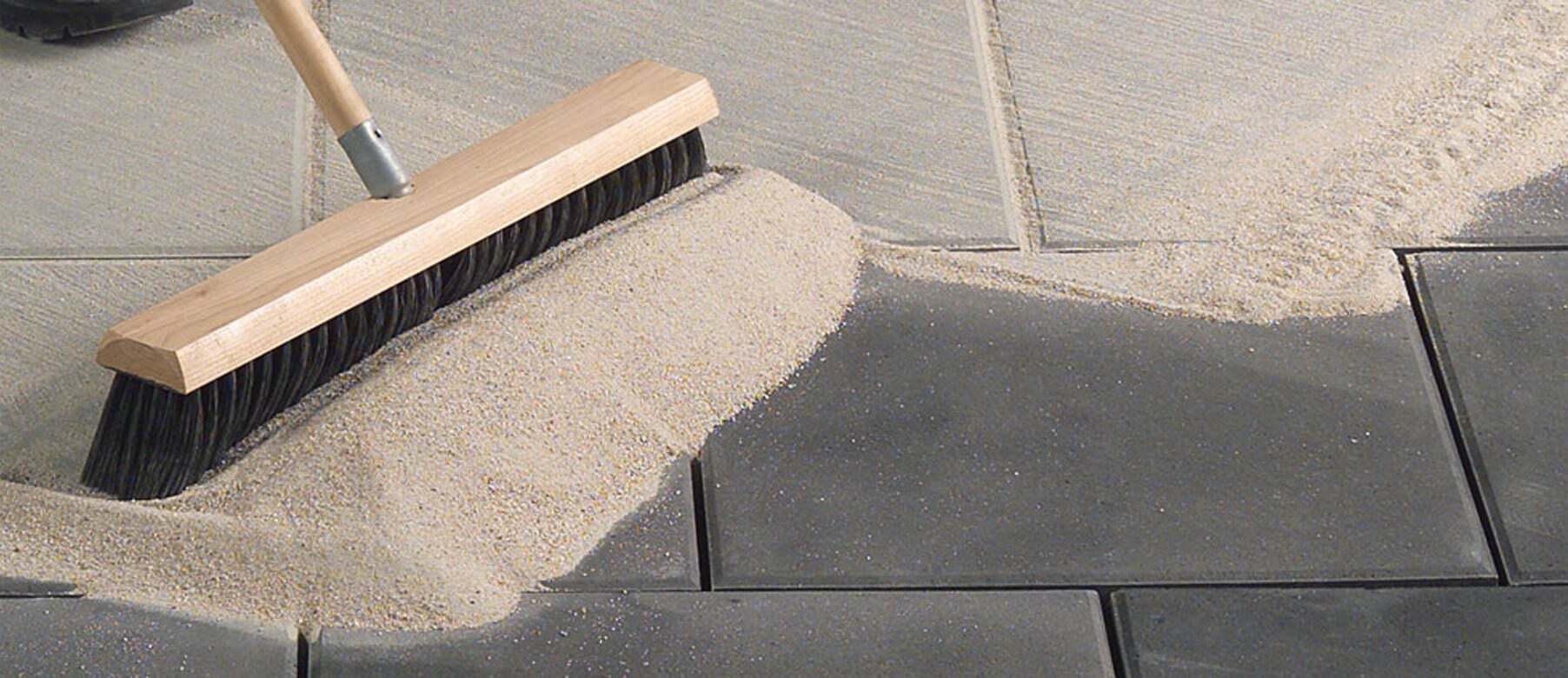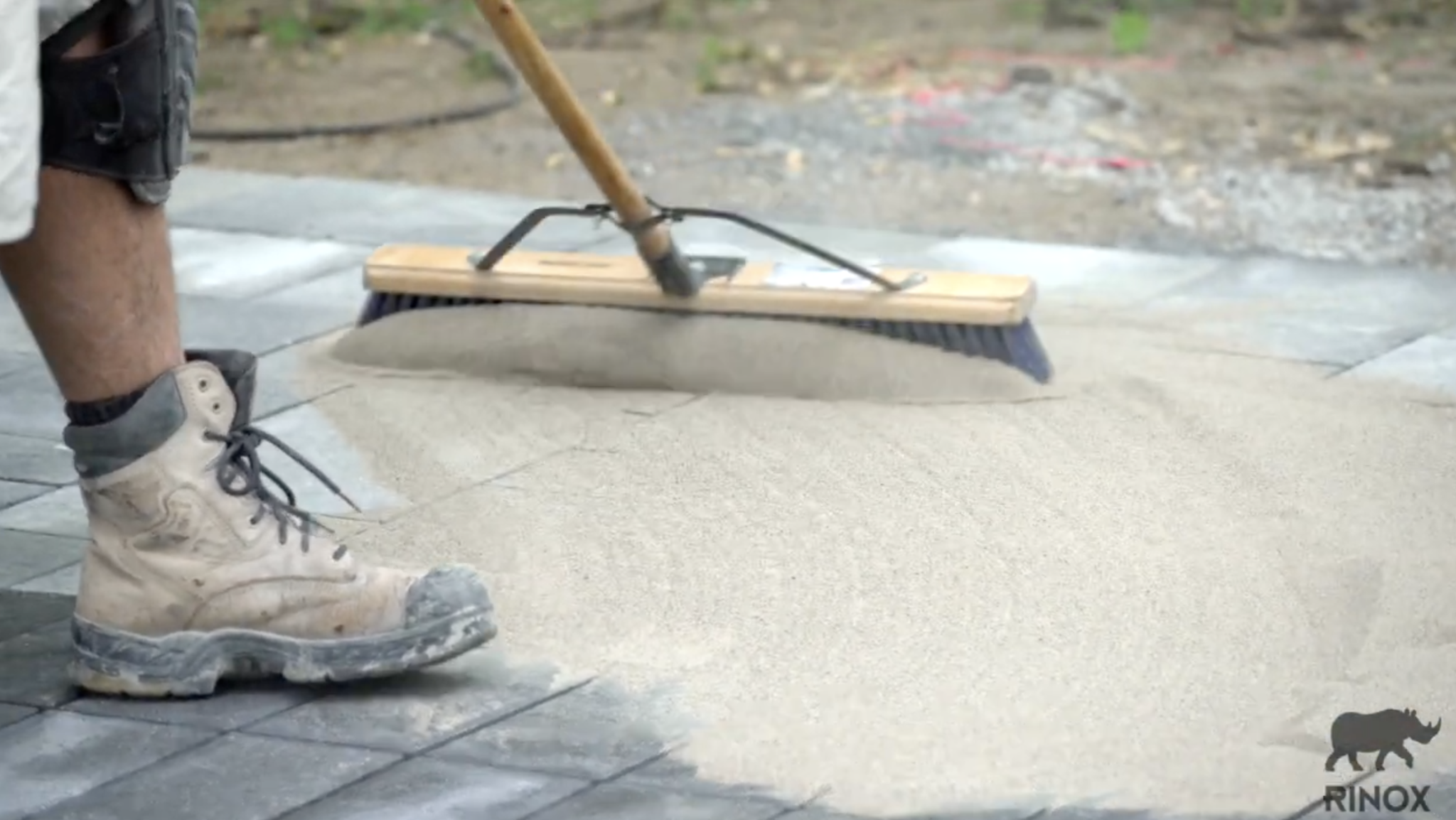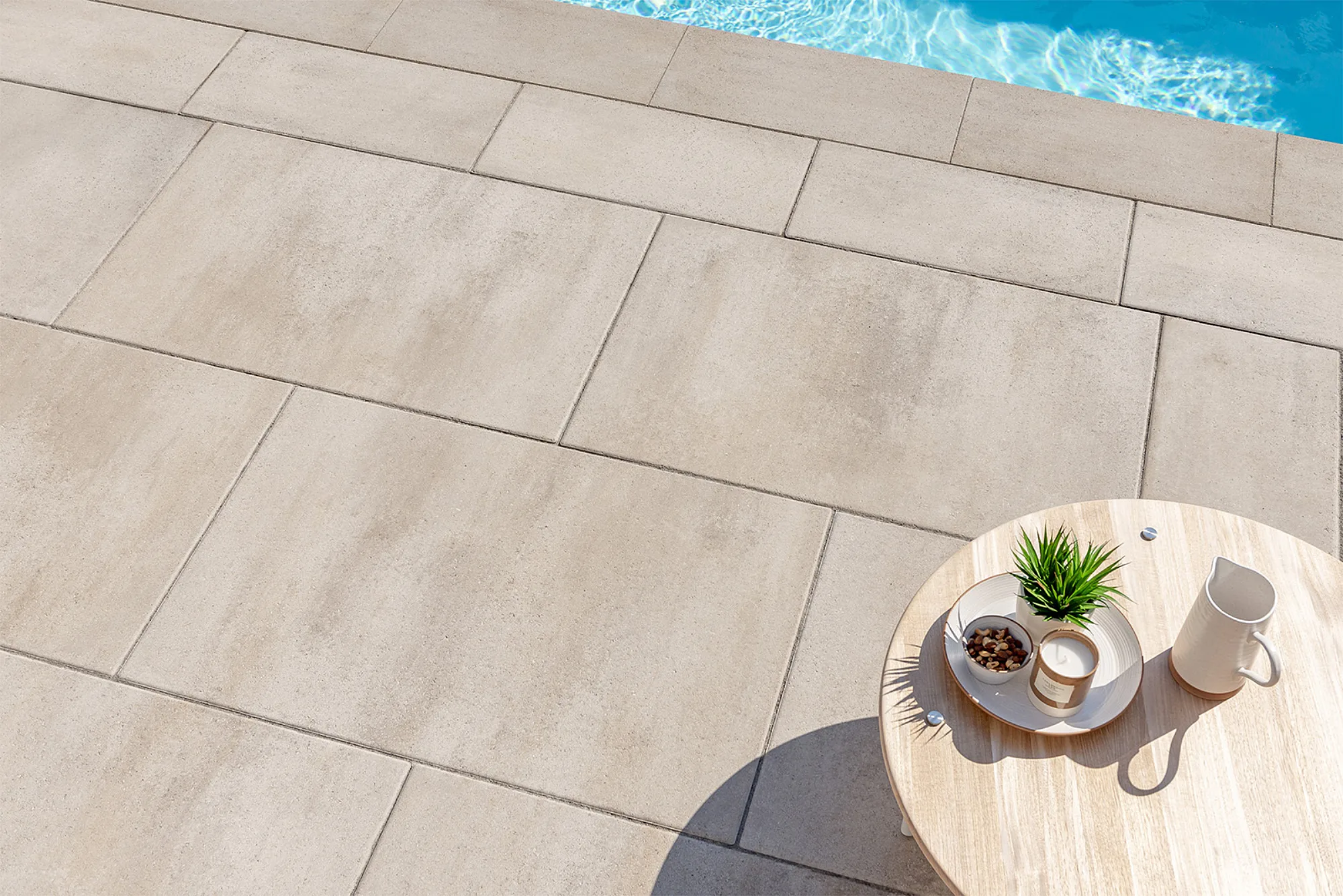Polymer sand has revolutionized the way we approach paving projects, providing a durable and aesthetically pleasing solution for patios, walkways, and driveways. This comprehensive guide explores everything you need to know about polymer sand, including its benefits, uses, and best practices for application.

What is Polymer Sand?
Polymer sand is a mixture of fine sand and special additives known as polymer binders. These binders activate when wet, locking the sand particles together to form a strong and durable jointing material. This makes it ideal for filling the gaps between pavers, ensuring a stable and long-lasting surface.
Benefits of Polymer Sand
1. Durability
- Strong Bonding: The polymer binders create a robust bond between sand particles, preventing erosion and displacement.
- Weather Resistance: Polymer sand withstands various weather conditions, from heavy rain to intense heat, ensuring a long-lasting performance.
- Weed Prevention: By filling the gaps between pavers, polymer sand inhibits weed growth, reducing the need for regular maintenance.
2. Aesthetic Appeal
- Uniform Finish: Provides a clean and even look by filling the gaps uniformly between pavers.
- Color Variety: Available in different colors, polymer sand allows for customization to match your design preferences.
3. Ease of Use
- Simple Application: The process of applying polymer sand is straightforward, making it accessible for DIY enthusiasts.
- Quick Activation: Activation with water is fast, streamlining the installation process.
4. Low Maintenance
- Insect Deterrent: The compact joints created by polymer sand discourage insects from nesting.
- Minimal Upkeep: Requires less maintenance compared to traditional sand, saving time and effort.
Common Uses of Polymer Sand
1. Patios
- Stabilizes Pavers: Keeps patio pavers in place, ensuring a stable and attractive surface.
- Prevents Shifting: Minimizes the movement of pavers due to foot traffic or weather changes.
2. Walkways
- Enhanced Stability: Ideal for walkways, providing a stable and durable surface.
- Slip Resistance: The binding properties of polymer sand offer a slip-resistant surface, enhancing safety.
3. Driveways
- Supports Heavy Loads: Suitable for driveways as it can bear the weight of vehicles without displacing.
- Longevity: Ensures the durability of the driveway by preventing erosion and weed growth.
4. Pool Decks
- Water Resistant: Its water-resistant properties make it perfect for pool decks, reducing the risk of water damage.
- Aesthetic Customization: Available in various colors to complement the design of your pool area.
The various landscaping projects for which polymer sand is used.
How to Apply Polymer Sand
1. Preparation
Clean the Area: Ensure the surface and gaps between pavers are clean and free from debris.
Dry Conditions: Apply polymer sand in dry conditions to avoid premature activation.
2. Application Process
Spread Evenly: Use a broom to distribute the polymer sand evenly across the surface.
Remove Excess: Sweep off any excess sand from the surface to prevent it from sticking when activated.
3. Activation
Gentle Watering: Use a gentle spray of water to activate the polymer binders. Avoid overwatering, which can wash away the sand.
Curing Time: Allow the polymer sand to set and cure according to the manufacturer's instructions, usually around 24 hours.
4. Maintenance Tips
Periodic Cleaning: Regularly clean the surface to remove debris and maintain its appearance.
Reapplication: Over time, reapply polymer sand to any joints that may have settled or eroded.
Looking to do a DIY paver install project with polymer sand? Check out our video on ''How to install pavers''.
Common Mistakes to Avoid
1. Overwatering
- Erosion Risk: Excessive water during activation can wash away the sand, reducing its effectiveness.
2. Insufficient Compaction
- Loose Joints: Failing to compact the sand properly can result in loose joints and unstable pavers.
3. Wet Conditions Application
- Premature Activation: Applying polymer sand in wet conditions can cause it to activate prematurely, leading to uneven joints.
4. Ignoring Instructions
- Incorrect Application: Each brand may have specific instructions for application and curing. Ignoring these can compromise the sand's performance.
Choosing the Right Polymer Sand
1. Color Options
- Design Matching: Choose a color that complements your outdoor design for a cohesive look.
2. Brand Reputation
- Quality Assurance: Opt for reputable brands known for high-quality polymer sand.
3. Price vs. Performance
- Cost-Effectiveness: Consider the balance between cost and performance, ensuring you get value for your investment.
Future Trends in Polymer Sand
1. Eco-Friendly Alternatives
- Sustainable Materials: Development of eco-friendly polymer binders to reduce environmental impact.
2. Performance Enhancements
- Innovative Formulations: Ongoing research to improve the durability and performance of polymer sand.
3. Customization Options
- Color and Texture Variants: Increased availability of color and texture options to suit diverse design needs.

Polymer sand is an essential material for modern landscaping and construction projects. Its numerous benefits, such as durability, low maintenance, and aesthetic appeal, make it a preferred choice for patios, walkways, driveways, and pool decks. By following best practices and avoiding common mistakes, you can ensure successful application and long-term performance of polymer sand. With continuous advancements in technology, we can expect even more innovative and eco-friendly options in the market, further enhancing the appeal and functionality of polymer sand.

